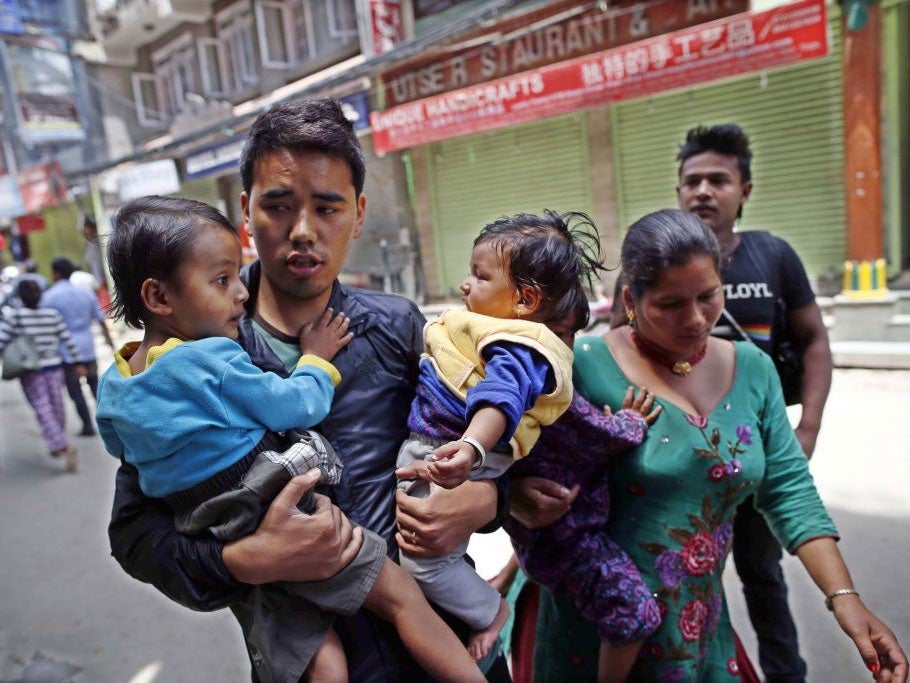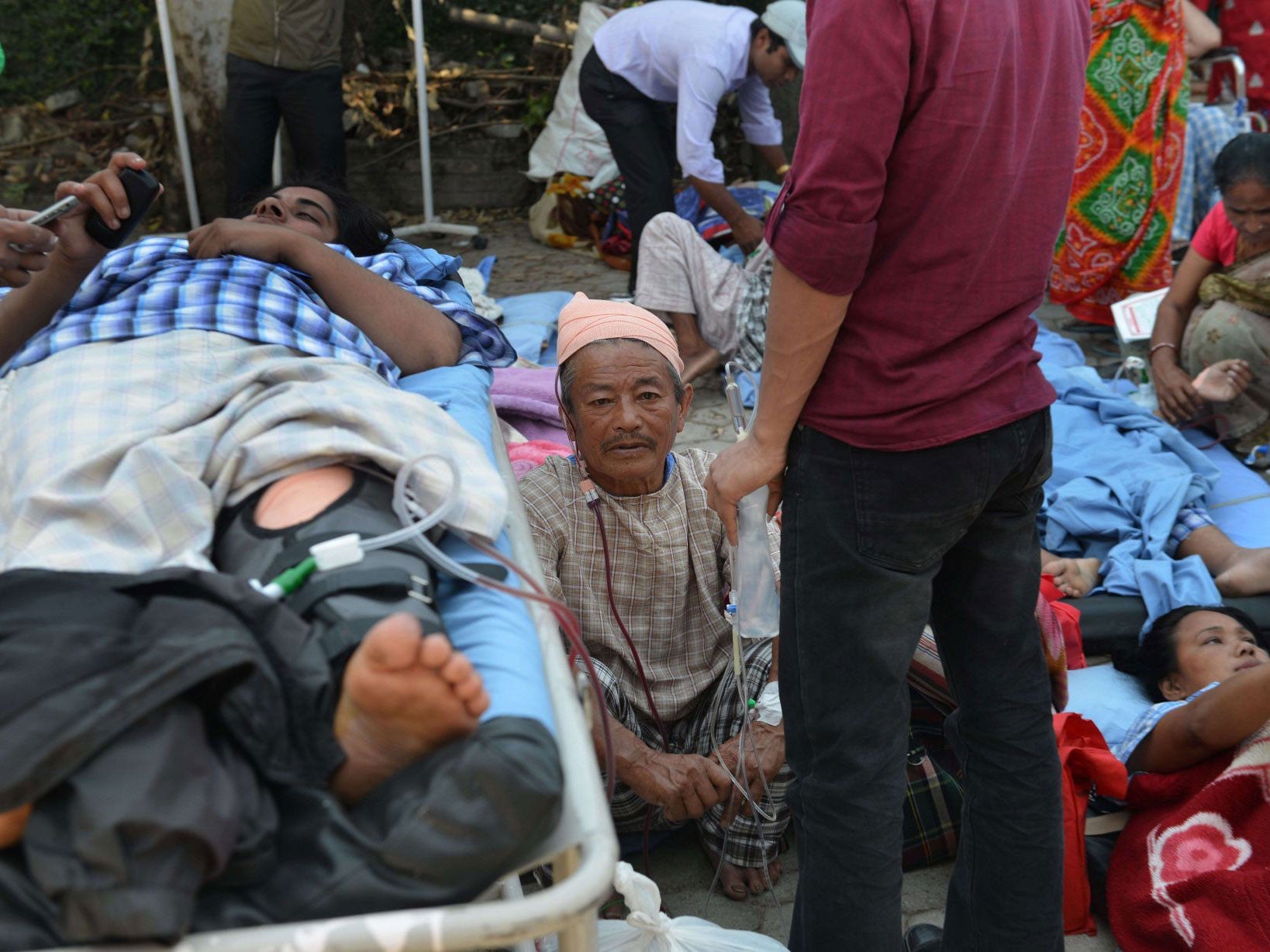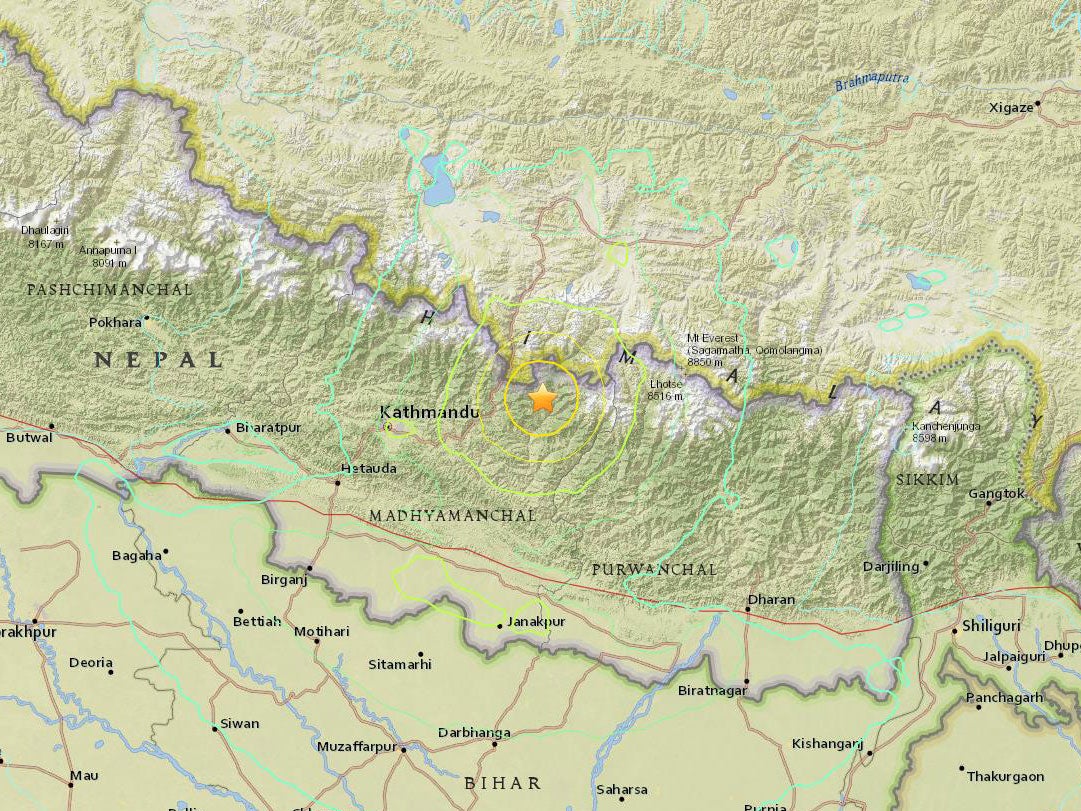Nepal earthquake: At least 60 killed and 1,000 injured in three countries by magnitude 7.3 earthquake
The counties were struggling to recover from a 7.8 magnitude quake on 25 April

Your support helps us to tell the story
From reproductive rights to climate change to Big Tech, The Independent is on the ground when the story is developing. Whether it's investigating the financials of Elon Musk's pro-Trump PAC or producing our latest documentary, 'The A Word', which shines a light on the American women fighting for reproductive rights, we know how important it is to parse out the facts from the messaging.
At such a critical moment in US history, we need reporters on the ground. Your donation allows us to keep sending journalists to speak to both sides of the story.
The Independent is trusted by Americans across the entire political spectrum. And unlike many other quality news outlets, we choose not to lock Americans out of our reporting and analysis with paywalls. We believe quality journalism should be available to everyone, paid for by those who can afford it.
Your support makes all the difference.At least 60 people have died in a magnitude 7.3 earthquake that collapsed buildings and triggered landslides in Nepal, India and Tibet.
Nepal's National Emergency Operation Centre said at least 42 people were killed in the country and 1,100 more were known to be injured.
The death toll in India stood at 17 this afternoon and the number could rise.
A school was reportedly among the buildings that collapsed in Bihar state, while Uttar Pradesh also saw a fatality, the Hindustan Times reported.
In Tibet, a landslide triggered by the quake killed one person and injured three, according to China's state broadcaster China Central Television.
Terrified crowds fled buildings as the earthquake struck in Kathmandu, which was already badly damaged, and it could be felt as far away as Delhi and Dhaka, in Bangladesh.
In the Indian capital, offices were evacuated as the ground shook and high rises swayed from side to side.
The earthquake struck near the Everest base camp at around 8am BST (12.35 local time) and was measured at a shallow depth of about 19 km (12 miles).
A series of intense aftershocks of up to magnitude 6.3 followed over the next hour, spreading panic.
The US Geological Survey initially measured the earthquake at magnitude 7.1 but later increased the strength, recording the epicentre near the Himalayan town of Namche Bazar.
Rescue helicopters were sent to the worst affected districts of Sindhupalchowk and Dolkha, where landslides and collapsed buildings were feared to have trapped people.
Yeeshu Shukla, Christian Aid's emergency programme officer, was in Sindhupalchowk, around 40 miles from the epicentre, when the earthquake hit.
"For a moment, I felt that the building I was in would come down," he said.
"We rushed out. Everyone was out on the street, some of them panicking, with mothers screaming, looking for their children. There were four or five severe aftershocks and some buildings collapsed."
Mr Shukla described the roads towards Kathmandu lined with people too scared to re-enter buildings.
Aid workers recorded the first fatalities in the remote Nepalese town of Chautara.
Paul Dillon, a spokesperson for the International Organisation for Migration, said several buildings had collapsed and search and rescue teams were already searching through the rubble.
Chautara had become a hub for humanitarian aid in the wake of the last disaster, with dozens of relief workers now based there to send help deeper into the countryside.
Norway's Red Cross, which was helping victims of the previous earthquake at a 60-bed hospital in the town, said on Twitter that there were “many injured, several killed” and added that their hospital tents were taking patients.
An emergency worker speaking to Sky News from the Nepalese capital said the earthquake was "very distressing" and put increased pressure on aid workers.
Olle Castell, the response manager at charity Plan UK, said the quake lasted around 30 seconds and felt like an "aftershock".
"Everyone is very worried and under emotional distress," he added. "Things were shaking and I could see the trees moving like it was a strong wind but there is no wind at all."
At the Norvic Hospital in the Nepalese capital, patients and doctors rushed out of the shaking building into the car park.

“I thought I was going to die this time,” said Sulav Singh, who rushed with his daughter into the street in the suburban district of Thapathali. “Things were just getting back to normal, and we get this one.”
Rose Foley, a Unicef official also based in Kathmandu, said: “The shaking seemed to go on and on. It felt like being on a boat in rough seas.”
She added that the agency was thinking about children across Nepal, who are already suffering and could be made more vulnerable.

Today's tremors came after the 7.8-magnitude earthquake that struck on 25 April, killing at least 8,046 people and injuring more than 17,800 more.
The Foreign and Commonwealth Office said it was investigating whether any British nationals were affected.
Additional reporting by agencies
Join our commenting forum
Join thought-provoking conversations, follow other Independent readers and see their replies
Comments